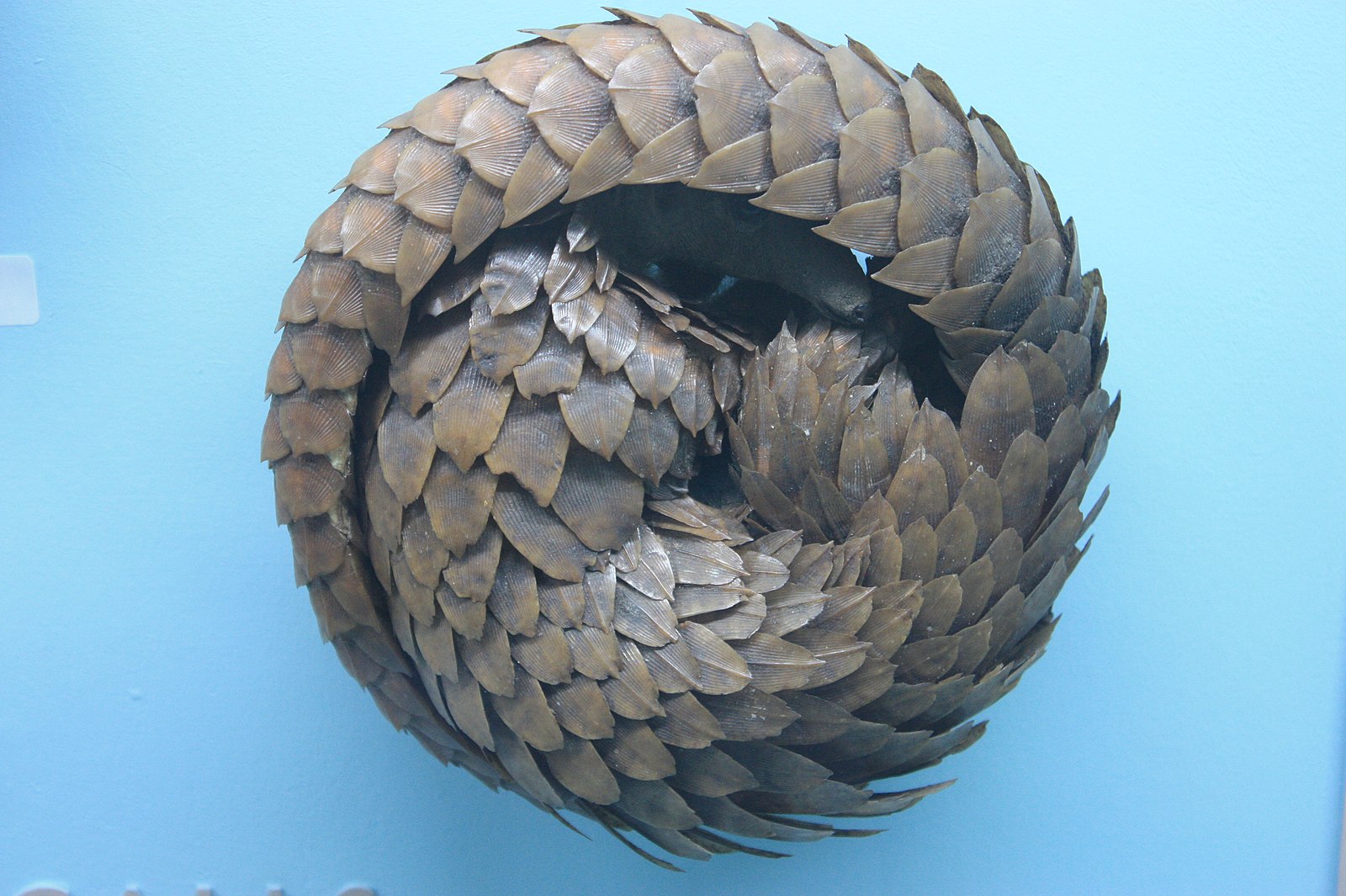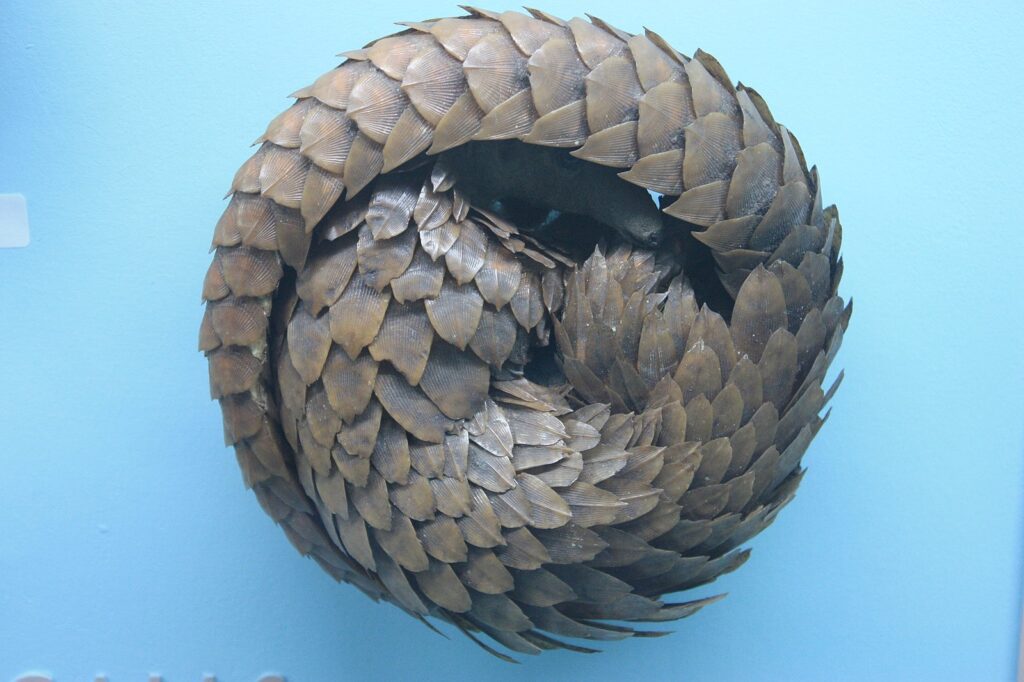Armadillos are easily mistaken for pangolins, because both of them have a protective shell on the surface of their body. They are often grouped together with anteaters because of their behavior and similarities in their diet. But there are significant differences between the two mammals in terms of physical characteristics, habitat, taxonomy, behavior and reproduction.

What is Armadillo?
Armadillos are one of a kind mammal in the order Cingulata which is part of the superorder Xenarthra. There are almost 20 living species of armadillo that belong to the order, of which the nine-branded armadillo is the only kind that lives in North America. The nine-branded armadillo is very distinctive and received its name from the bands that circle its body. Its name in Spanish means “little armored one,” which refers to the bony plates that cover most of their body. Armadillos are found in South America, Central America, and the southern United States.

What is Pangolin?
Pangolins are scaly anteaters of the placental mammal order Pholidota, and represent one of the most unusual orders of mammals. Pangolins are often mistaken as reptiles, but they are scaly-skinned animals that posses a covering of epidermal scales growing from a thick underlying skin, which distinguish pangolins from all other mammals. Pangolins lack teeth and instead they use powerful muscles and small pebbles in their stomach to grind up their food. Pangolins are found in much of Southeast Asia and subtropical Africa.
Difference Between Armadillo and Pangolin
Family of Armadillo and Pangolin
– Armadillos are strange looking mammals in the order Cingulata which is part of the superorder Xenarthra – an ancient order that was much more diverse and included ground sloths and armored mammals. There are almost 20 living species of armadillo that belong to the order. Armadillos belong to the family Dasypodidae. Pangolins, on the other hand, are often known as the scaly anteaters and comprise the placental mammal order Pholidota of the Manidae family. Pangolins represent one of the most unusual orders of mammals.
Morphology
– Armadillos are one its kind with a protective shell on their body and long sharp claws for digging. The outer shell is called a carapace which is brown and tough like armor. The integument is one of the most characteristic features of the anatomy of the armadillos. Its name in Spanish means “little armored one,” which refers to the bony plates that cover most of their body. Pangolins are characterized by their name “scaly anteater” and their most distinctive feature is an external armor of overlapping epidermal scales. They are the only mammals to possess such armor that grows from their thick underlying skin.
Physical Features of Armadillo and Pangolin
– Armadillos are generally larger than pangolins and have long tails and short limbs. They have tiny, pointed eyes and long, tube-shaped snouts. Armadillos generally weight between nine and 16 pounds and the average armadillo is about 75 cm long, including tail. The giant armadillo grows up to 150 cm. They vary in size and color – the giant armadillo is dark brown while the pink fairy armadillo is a lovely salmon color. Pangolins weight about 3.5 lbs to 73 lbs and they can grow up to four feet long. The giant ground pangolin is the largest of their living species. Pangolins lack teeth and instead use powerful muscles and small pebbles in their stomach to grind up their food.
Habitat and Diet of Armadillo and Pangolin
– Armadillos live mostly in warm places, including rain forests, grasslands, semi-deserts, and other forested areas. Some live in areas with moist soil, close to rivers or streams. They live in South America, Central America, and the southern United States. The nine-branded armadillos are probably the only armadillos to live outside of Latin America. In fact, the nine-branded armadillo it is the sole North American representative of the order Xenarthra. They eat ants, beetles, termites, and other insects.
Pangolins inhabit sandy habitats such as dry woodlands, tropical forests and the savannah. They live close to water sources. Pangolins are dispersed throughout Southern, Central and East Africa. There are four species that spread across Asia: the Indian Pangolin, the Chinese Pangolin, the Sunda Pangolin, and the Palawan Pangolin. Four African Pangolins include the ground pangolin, the giant pangolin, the white-bellied, and the black-bellied pangolin. Pangolins rely mainly on the diet of ants and termites.
Reproduction
– Armadillos mate in late summer between June and September. The female armadillo undergoes delayed implantation, meaning the fertilized egg (zygote) floats free in the uterus prior to implanting. This delay is typically for three to four months, although a two-year delay in exceptional cases has been documented. The fertilized egg breaks into four identical zygotes, giving birth to quadruplets. Pangolins, on the other hand, are solitary and it is assumed that males and females only come together to mate. The mating happens once each year, usually during the summer or autumn. During copulation, the tails of the males and females are entwined. Gestation period is estimated to be 140 days and females give birth to just one live baby.
Armadillo vs. Pangolin: Comparison Chart

Summary of Armadillo and Pangolin
Armadillos are some of the world’s most bizarre animals along with anteaters and sloths, and together they make up the superorder Xenarthra. These are shy, nocturnal animals that live in warm places with a lot of rainfall. They prefer living in wooded areas with loose, sandy soil, often close to ponds or streams. There are many species of Armadillos, of which the nine-branded armadillo is the only kind that lives in North America. Pangolins, on the other hand, are scaly anteaters that represent one of the most unusual orders of mammals and their most noteworthy feature is an external armor of overlapping epidermal scales. In fact, they are the only mammals to possess such armor. Pangolins are found in much of Southeast Asia and subtropical Africa, and they predominantly feed on ants and termites, just like armadillos.
- Difference Between Caucus and Primary - June 18, 2024
- Difference Between PPO and POS - May 30, 2024
- Difference Between RFID and NFC - May 28, 2024

